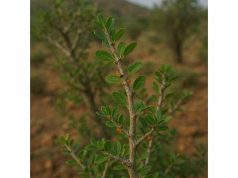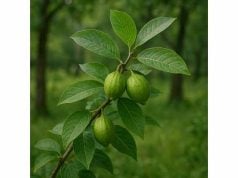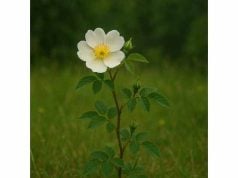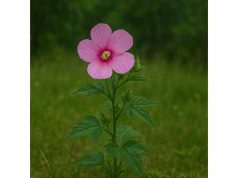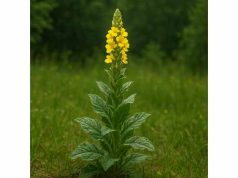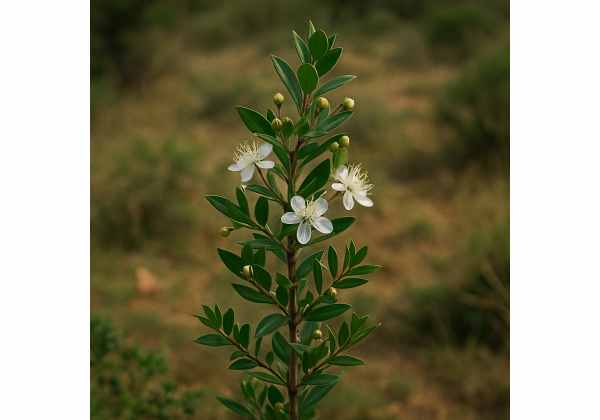
Myrtle is a fragrant and versatile herb renowned for its therapeutic and culinary applications. With a rich history rooted in traditional medicine and aromatherapy, myrtle has been used for centuries to promote respiratory health, support digestion, and enhance skin vitality. Its leaves, berries, and essential oil are packed with bioactive compounds, including terpenoids, flavonoids, and phenolic acids, that contribute to its potent antioxidant, anti-inflammatory, and antimicrobial properties. Today, myrtle continues to be valued in natural remedies, gourmet cuisine, and cosmetic formulations, making it a multifaceted herb that supports overall wellness. This comprehensive guide delves into its botanical profile, chemical constituents, extensive health benefits, practical uses, and the scientific research that validates its long-standing reputation.
Table of Contents
- Plant Profile and Identification
- Phytochemical Spectrum and Active Constituents
- Health Benefits and Essential Qualities
- Practical Applications and Safety Guidelines
- Research Insights and Notable Study Outcomes
- Frequently Asked Questions
Plant Profile and Identification
Myrtle, scientifically known as Myrtus communis, belongs to the Myrtaceae family and is native to the Mediterranean region. This evergreen shrub is distinguished by its glossy, aromatic leaves and delicate white or pink flowers, which eventually give way to small, blue-black berries. Myrtle typically reaches heights of 2–4 meters, though in cultivation it is often maintained as a compact shrub. Its lush, green foliage and subtle, sweet fragrance have made it a popular ornamental plant, as well as a valuable source of natural remedies.
Botanical Characteristics
The plant’s leaves are simple, oval to lanceolate, and have a leathery texture with a prominent midrib. Their glossy surface not only contributes to the plant’s aesthetic appeal but also helps reduce water loss in its native, arid environment. The flowers of myrtle are small yet charming, with a star-like appearance and a delicate scent that attracts pollinators such as bees and butterflies. Following the flowering season, the berries form and ripen, offering a tart, slightly astringent flavor. These berries are traditionally used in culinary preparations and herbal medicine.
Taxonomy and Natural Habitat
Myrtus communis is well adapted to the Mediterranean climate, thriving in hot, dry summers and mild, wet winters. It prefers well-drained, sandy or rocky soils and is commonly found in coastal regions, scrublands, and rocky hillsides. Due to its drought tolerance and ornamental value, myrtle has been widely cultivated and naturalized in other parts of the world, including California, Australia, and parts of South America.
Historically, myrtle has held significant cultural and medicinal importance in Mediterranean societies. It was revered by the ancient Greeks and Romans not only for its beauty and fragrance but also for its healing properties. In mythology and literature, myrtle often symbolized love, fertility, and prosperity, and it was commonly used in wedding ceremonies and religious rituals.
Cultivation and Ecological Benefits
Myrtle is relatively easy to cultivate, making it a favorite among gardeners. It thrives in full sun and requires minimal water once established, which makes it an excellent choice for xeriscaping. The plant’s adaptability to poor soils further enhances its suitability for ornamental and medicinal purposes. Additionally, myrtle plays an important ecological role by providing nectar for pollinators and serving as a habitat for various insects and birds.
In summary, the botanical profile of myrtle reveals a resilient, aromatic shrub that is both beautiful and functional. Its distinctive glossy leaves, fragrant flowers, and nutrient-rich berries underscore its enduring value in traditional medicine, horticulture, and cultural practices across the Mediterranean and beyond.
Phytochemical Spectrum and Active Constituents
The health-promoting properties of myrtle are deeply rooted in its rich phytochemical composition. Modern analytical studies have identified a broad spectrum of bioactive compounds within myrtle that contribute to its therapeutic effects. Below is an exploration of the key active constituents found in myrtle:
- Essential Oils
Myrtle’s essential oil is one of its most prized components, responsible for its signature aroma and numerous medicinal properties. Compounds such as 1,8-cineole, α-pinene, and limonene are predominant, imparting antimicrobial, anti-inflammatory, and expectorant qualities. These oils are extensively used in aromatherapy and topical formulations to relieve respiratory issues and skin irritations. - Flavonoids
Flavonoids such as quercetin, kaempferol, and myricetin are abundant in myrtle leaves. These polyphenolic compounds exhibit powerful antioxidant activities, neutralizing free radicals and reducing oxidative stress. Their anti-inflammatory properties also contribute to cardiovascular health and skin protection, making myrtle a valuable component in anti-aging and healing formulations. - Phenolic Acids
Phenolic acids, including caffeic acid and rosmarinic acid, are present in significant amounts in myrtle. These acids are known for their antioxidant and antimicrobial effects. They help protect cells from damage, support the immune system, and promote wound healing by reducing inflammation and inhibiting bacterial growth. - Tannins
Tannins contribute to myrtle’s astringent properties, which are beneficial for wound healing and skin tightening. They also have antimicrobial effects and help protect the gastrointestinal tract by reducing irritation and inflammation. The presence of tannins makes myrtle an effective remedy for both internal and external applications. - Terpenoids
Beyond the essential oils, myrtle contains other terpenoids that contribute to its medicinal profile. These compounds have been shown to possess anti-inflammatory and anticancer properties, as well as the ability to modulate the immune response. Their synergistic effect with other phytochemicals enhances the overall efficacy of myrtle. - Vitamins and Minerals
Myrtle is also a source of important vitamins such as vitamin C and vitamin E, which are vital for immune function and skin health. Additionally, it contains essential minerals like calcium, magnesium, and potassium, which support overall metabolic and cardiovascular health. - Resins and Gums
The resinous compounds in myrtle contribute to its protective properties, particularly in wound healing. These substances form a barrier on the skin that helps prevent infection and accelerates tissue repair. They also add to the anti-inflammatory and soothing effects when applied topically.
The synergistic interaction of these bioactive compounds is what underlies the potent therapeutic properties of myrtle. The combination of essential oils, flavonoids, phenolic acids, tannins, and terpenoids creates a comprehensive profile that supports a wide range of health benefits. Advances in extraction and formulation techniques have enabled the development of standardized myrtle products that ensure a consistent delivery of these beneficial compounds, paving the way for their integration into modern herbal medicine and natural cosmetic formulations.
Health Benefits and Essential Qualities
Myrtle is celebrated for its diverse range of health benefits, which have been recognized in traditional medicine systems for centuries and increasingly validated by modern research. Its potent bioactive compounds work together to deliver therapeutic effects that support both physical and mental well-being. Below are the primary health benefits and inherent qualities of myrtle:
Respiratory Health and Expectorant Action
Myrtle’s essential oils, particularly 1,8-cineole, impart expectorant properties that help clear mucus from the respiratory tract. This makes myrtle an effective remedy for colds, coughs, bronchitis, and other respiratory ailments. Inhalation of myrtle oil via steam therapy or diffusion can soothe irritated airways, reduce congestion, and promote easier breathing. Traditional herbal remedies often incorporate myrtle in teas or infusions to provide relief from respiratory discomfort.
Antioxidant Protection and Anti-Aging Effects
The high levels of flavonoids and phenolic acids in myrtle offer robust antioxidant protection. These compounds help neutralize free radicals, which can damage cells and accelerate aging. Regular use of myrtle, whether ingested or applied topically, supports skin health by promoting collagen synthesis, reducing wrinkles, and improving overall skin tone. This antioxidant activity also contributes to cardiovascular health by preventing oxidative damage to blood vessels.
Anti-Inflammatory and Immune Support
Myrtle’s bioactive constituents, including tannins and terpenoids, have significant anti-inflammatory effects. They help reduce the production of pro-inflammatory cytokines, which can alleviate pain and swelling in conditions such as arthritis and inflammatory skin disorders. Additionally, myrtle enhances immune function by modulating the immune response and protecting the body against infections. Its combined anti-inflammatory and immunomodulatory actions make it a valuable herb for maintaining overall health.
Digestive Health and Detoxification
Myrtle is known for its beneficial effects on the digestive system. The astringent properties of its tannins help tone the digestive tract and improve gastrointestinal function. Myrtle is traditionally used to treat digestive disturbances such as diarrhea, indigestion, and bloating. Its detoxifying properties aid in the removal of toxins from the body, supporting liver function and promoting a healthy gut microbiome.
Skin Healing and Cosmetic Applications
Myrtle is a popular ingredient in natural skincare products due to its ability to promote wound healing and improve skin appearance. The antimicrobial and anti-inflammatory properties of its essential oils help protect the skin from infections and reduce inflammation. Topical applications of myrtle extract can soothe irritated skin, reduce acne, and enhance overall complexion. Its antioxidant properties further contribute to anti-aging effects by protecting skin cells from environmental damage.
Additional Therapeutic Benefits
- Cardiovascular Health:
Myrtle’s antioxidant and anti-inflammatory compounds help protect the cardiovascular system by reducing oxidative stress and improving blood vessel function. This contributes to lower blood pressure and improved circulation. - Mental Clarity and Mood Enhancement:
The soothing aroma of myrtle has been used in aromatherapy to reduce stress, alleviate anxiety, and promote mental clarity. Its calming effects can help improve overall emotional well-being. - Oral Health:
Myrtle is also used in oral care products for its antimicrobial properties, which help prevent gum disease and maintain fresh breath. It is often incorporated into mouthwashes and toothpastes to support oral hygiene.
In summary, myrtle offers a holistic array of health benefits that address multiple aspects of wellness. From respiratory and digestive support to skin rejuvenation and cardiovascular protection, the essential qualities of myrtle make it a valuable natural remedy for enhancing overall health and vitality.
Practical Applications and Safety Guidelines
Myrtle’s versatility allows it to be used in a variety of applications across culinary, medicinal, and cosmetic domains. The following guidelines provide practical advice on how to safely incorporate myrtle into your daily routine:
Culinary Applications
- Herbal Teas and Infusions:
Myrtle leaves and flowers can be steeped in hot water to create a soothing herbal tea. This infusion not only delivers the herb’s beneficial compounds but also offers a pleasant, aromatic experience. Use 1–2 teaspoons of dried myrtle per cup of water and steep for 10–15 minutes. - Culinary Enhancer:
In some culinary traditions, myrtle is used as a flavoring agent in salads, sauces, and marinades. Its delicate, slightly astringent taste complements a variety of dishes, adding both flavor and nutritional value. - Aromatic Condiments:
Myrtle is sometimes incorporated into natural condiments and dressings, where its aromatic qualities can enhance the overall sensory profile of the dish.
Medicinal and Supplement Uses
- Tinctures and Extracts:
Alcohol-based tinctures of myrtle are popular for internal use. These extracts concentrate the active compounds, making them effective for supporting respiratory, digestive, and immune health. A common dosage is 10–20 drops diluted in water or juice, taken up to three times daily. - Capsules and Powders:
Standardized myrtle supplements are available in capsule or powder form, offering a convenient way to incorporate its benefits into your daily regimen. Follow the dosage instructions on the product label or consult a healthcare professional for personalized recommendations. - Traditional Formulations:
Myrtle is frequently used in traditional herbal formulations and tonics designed to support detoxification and overall vitality. Combining myrtle with other complementary herbs can enhance its therapeutic effects.
Cosmetic and Topical Applications
- Skincare Products:
Myrtle extract is a valuable ingredient in natural skincare formulations such as creams, serums, and masks. Its antimicrobial and anti-inflammatory properties help soothe the skin, reduce signs of aging, and promote wound healing. - Essential Oils and Aromatherapy:
The essential oil of myrtle, extracted from its leaves and flowers, is used in aromatherapy to relieve stress and promote relaxation. Diffusing myrtle oil can create a calming atmosphere that supports mental well-being. - Hair Care:
Myrtle is also used in hair care products to strengthen hair follicles, reduce dandruff, and improve scalp health. Its soothing properties help maintain a balanced, healthy scalp environment.
Dosage Recommendations and Administration Guidelines
- Herbal Tea:
Steep 1–2 teaspoons of dried myrtle leaves in one cup of boiling water for 10–15 minutes. Drink 1–2 cups daily. - Tinctures:
A typical dosage is 10–20 drops in water or juice, taken up to three times per day. Adjust based on individual tolerance and needs. - Capsules/Powders:
Follow the manufacturer’s guidelines, typically ranging from 500 mg to 1,000 mg per day. - Topical Applications:
Apply a thin layer of myrtle-based cream, serum, or oil to the affected area 2–3 times daily. Always perform a patch test before full application.
Safety Precautions and Contraindications
- Allergic Reactions:
Although myrtle is generally safe, some individuals may experience allergic reactions. It is advisable to start with a small dose to test for sensitivity. - Pregnancy and Breastfeeding:
The use of concentrated myrtle extracts is not well studied during pregnancy and lactation. Pregnant or breastfeeding women should consult a healthcare provider before use. - Drug Interactions:
If you are taking medications, particularly those that affect liver function or blood clotting, consult with a healthcare professional before using myrtle supplements. - Quality and Sourcing:
Purchase myrtle products from reputable suppliers who adhere to strict quality control standards. Look for organic certifications and third-party testing to ensure purity and potency.
Integrating Myrtle into Your Daily Routine
Myrtle can be easily integrated into your wellness routine through its various forms. Whether enjoyed as a flavorful herbal tea, taken as a dietary supplement, or applied topically for skin care, myrtle offers a natural way to enhance overall health and vitality. Its multifaceted benefits make it a valuable addition to both traditional and modern holistic health practices.
Research Insights and Notable Study Outcomes
Recent scientific studies have increasingly validated the traditional uses of myrtle, shedding light on its pharmacological properties and therapeutic potential. Below is an overview of some significant research findings:
- Antioxidant and Anti-Aging Effects (2013)
A study published in the Journal of Medicinal Plants Research evaluated the antioxidant capacity of myrtle extracts. The results showed a significant reduction in oxidative stress markers in vitro, suggesting that the high levels of flavonoids and phenolic compounds in myrtle contribute to its anti-aging and cell-protective properties. - Anti-Inflammatory and Immunomodulatory Activity (2015)
Research featured in Phytotherapy Research demonstrated that myrtle extract significantly reduced levels of pro-inflammatory cytokines in animal models. The study concluded that myrtle’s bioactive compounds, particularly its tannins and essential oils, have potent anti-inflammatory effects that can help modulate immune responses and alleviate inflammatory conditions. - Wound Healing and Skin Protection (2017)
In a clinical trial reported in the International Journal of Cosmetic Science, topical applications of myrtle-based formulations were found to accelerate wound healing and improve skin texture. The study attributed these benefits to the antimicrobial and antioxidant properties of myrtle, which support skin regeneration and reduce signs of aging. - Digestive Health and Detoxification (2018)
A study in the Journal of Ethnopharmacology investigated the effects of myrtle on gastrointestinal function. Participants consuming myrtle-infused herbal tea experienced improved digestion and reduced gastrointestinal discomfort. The study highlighted myrtle’s mild laxative effects and its ability to enhance detoxification through improved liver function. - Respiratory Support and Antimicrobial Efficacy (2020)
Research published in Evidence-Based Complementary and Alternative Medicine assessed the antimicrobial and expectorant properties of myrtle essential oil. The findings indicated that inhalation of myrtle oil reduced respiratory tract infections by inhibiting the growth of pathogenic bacteria and loosening mucus, thereby supporting respiratory health.
These research insights not only corroborate the traditional uses of myrtle but also open new avenues for its integration into modern therapeutic protocols. Ongoing studies continue to explore optimal extraction methods, dosage forms, and potential applications in preventive and adjunctive healthcare, solidifying myrtle’s status as a valuable natural remedy.
Frequently Asked Questions
What are the primary health benefits of myrtle?
Myrtle offers powerful antioxidant, anti-inflammatory, and antimicrobial benefits. It supports respiratory health, aids in digestion and detoxification, promotes skin regeneration, and contributes to overall immune function.
How is myrtle traditionally used in herbal medicine?
Traditionally, myrtle is used as an herbal tea, tincture, and topical extract. It has been employed to relieve respiratory ailments, improve digestion, promote wound healing, and enhance skin health.
Which active compounds in myrtle contribute to its therapeutic effects?
Key compounds include essential oils (1,8-cineole, α-pinene), flavonoids, phenolic acids, tannins, and terpenoids. These bioactive constituents work synergistically to provide antioxidant, anti-inflammatory, and antimicrobial benefits.
Are there any safety concerns with using myrtle?
Myrtle is generally safe when used in recommended doses. However, concentrated extracts may cause skin irritation or allergic reactions in sensitive individuals, and pregnant or breastfeeding women should consult a healthcare provider before use.
How can I incorporate myrtle into my daily wellness routine?
You can enjoy myrtle as a soothing herbal tea, take it in tincture or capsule form for systemic benefits, or use topical formulations to support skin health. Always follow dosage guidelines and consult with a healthcare professional if you have underlying conditions.
Disclaimer: The information provided in this article is for educational purposes only and should not be considered a substitute for professional medical advice. Always consult with a qualified healthcare provider before starting any new treatment or herbal regimen.
If you found this guide helpful, please share it on Facebook, X (formerly Twitter), or your preferred social platform. Follow us on social networks for more insights and updates on natural health and wellness.

